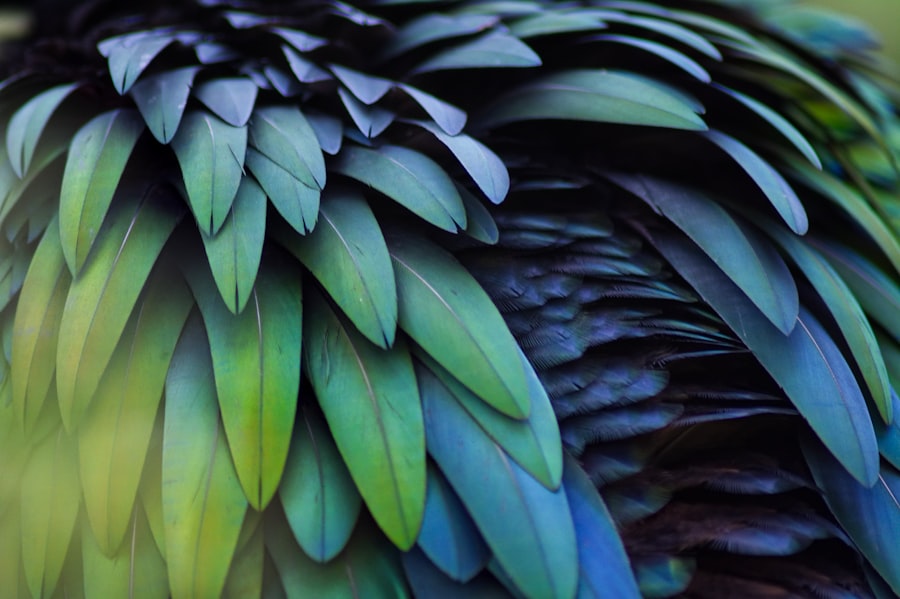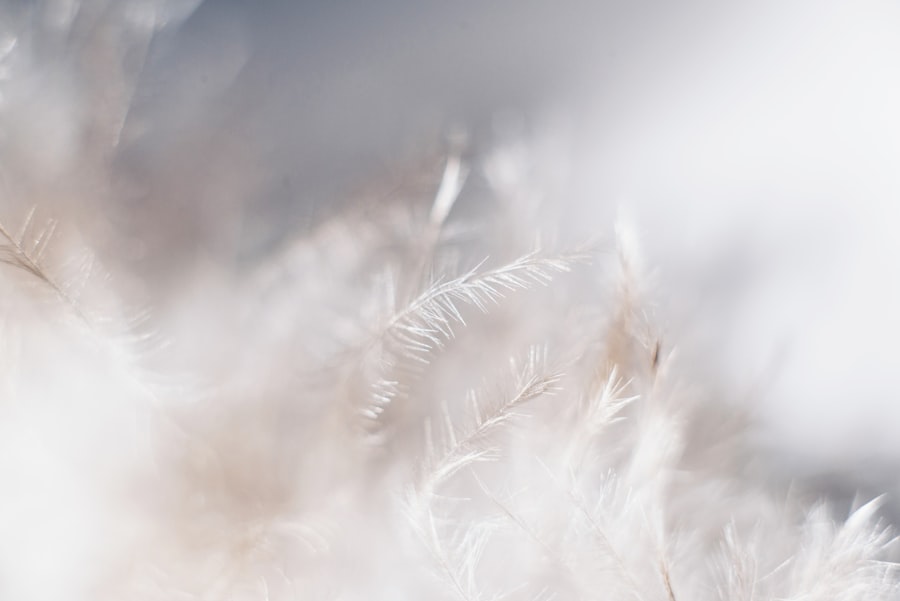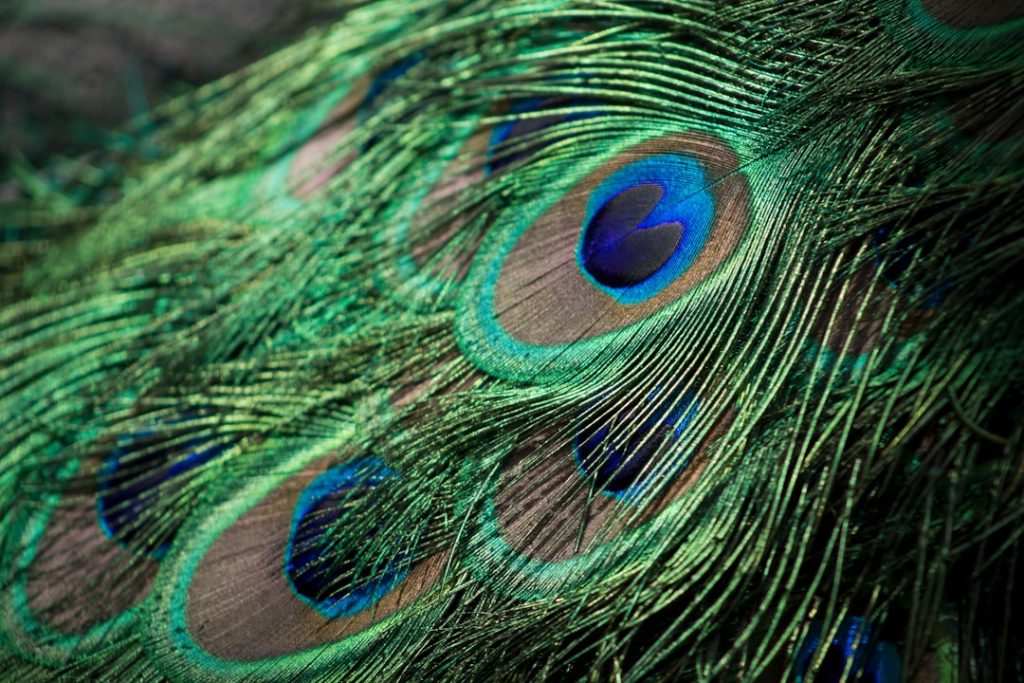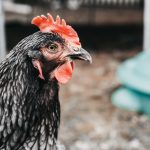Feathers are essential for chickens’ survival in freezing temperatures. Unlike mammals, chickens have limited ability to regulate their body temperature, making feathers crucial for warmth. Feathers insulate by trapping air close to the body, creating a warm layer that maintains a stable body temperature.
In cold weather, chickens fluff their feathers to increase trapped air, enhancing insulation. Without feathers, chickens would be highly vulnerable to hypothermia and frostbite in freezing conditions. Feathers also serve as a protective barrier against wind and moisture.
The outer feather layer repels water, keeping the chicken’s skin dry and preventing heat loss through evaporation. This is particularly important in freezing temperatures, as wet feathers can rapidly lead to hypothermia. Additionally, feathers block cold winds, reducing body heat loss.
Thus, feathers function as a natural defense mechanism against harsh winter elements, enabling chickens to maintain their body temperature and stay warm in freezing conditions.
Table of Contents
- 1 How Chickens Use Their Feathers to Regulate Body Temperature
- 2 The Insulating Properties of Chicken Feathers
- 3 Behavioral Adaptations of Chickens in Cold Weather
- 4 How Chickens Keep Their Feet Warm in Freezing Temperatures
- 5 Tips for Helping Chickens Stay Warm in Cold Weather
- 6 The Role of Proper Shelter and Bedding for Chickens in Freezing Temperatures
- 7 FAQs
- 7.1 How do chickens keep warm in freezing temperatures?
- 7.2 Do chickens huddle together to keep warm in freezing temperatures?
- 7.3 Do chickens have special feathers to keep them warm in freezing temperatures?
- 7.4 Can chickens withstand extremely cold temperatures without additional heat sources?
- 7.5 What are some signs that chickens are too cold in freezing temperatures?
Key Takeaways
- Feathers are crucial for chickens in freezing temperatures as they provide insulation and help regulate body temperature.
- Chickens use their feathers to trap warm air close to their bodies and regulate their body temperature in cold weather.
- Chicken feathers have insulating properties that help keep them warm in freezing temperatures.
- Chickens adapt to cold weather by fluffing up their feathers, seeking shelter, and huddling together for warmth.
- Chickens keep their feet warm in freezing temperatures by tucking them into their feathers and seeking dry ground.
How Chickens Use Their Feathers to Regulate Body Temperature
Insulation in Cold Weather
When the weather is cold, chickens fluff up their feathers to create an insulating layer of air around their bodies. This fluffing action increases the thickness of the feather layer, which in turn traps more air and provides better insulation. By doing this, chickens are able to conserve body heat and maintain a stable internal temperature, even when the external environment is freezing.
Cooling Down in Warm Weather
Conversely, when the weather is warm, chickens will flatten their feathers against their bodies to release excess heat and allow air to circulate closer to the skin. This action helps to prevent overheating and allows the chicken to cool down more effectively.
Adapting to Temperature Changes
By adjusting the position of their feathers, chickens are able to adapt to changes in temperature and maintain a comfortable body temperature regardless of the external conditions. This remarkable ability to regulate body temperature using their feathers is essential for chickens to survive in a wide range of climates, including freezing temperatures.
The Insulating Properties of Chicken Feathers

The insulating properties of chicken feathers are truly remarkable and play a vital role in helping chickens stay warm in freezing temperatures. Feathers are made up of a central shaft with barbs that branch off on either side, creating a structure that traps air and provides excellent insulation. This structure allows feathers to effectively retain body heat and prevent heat loss, even in extremely cold conditions.
Additionally, the barbs on the feathers interlock with each other, creating a tight seal that further enhances their insulating properties. Feathers also have the ability to repel water, which is essential for keeping chickens warm in freezing temperatures. The outer layer of feathers is coated with natural oils that help to shed water and prevent it from penetrating through to the skin.
This waterproofing effect is crucial for maintaining the insulating properties of the feathers, as wet feathers would be much less effective at trapping air and providing insulation. In this way, the unique structure and water-repelling properties of chicken feathers make them an ideal natural insulation for keeping chickens warm in cold weather.
Behavioral Adaptations of Chickens in Cold Weather
Chickens have developed several behavioral adaptations to cope with cold weather and ensure their survival in freezing temperatures. One such adaptation is roosting, where chickens perch on elevated roosts during the night to keep themselves off the cold ground. Roosting not only helps to keep chickens warmer by avoiding direct contact with the cold ground, but it also allows them to huddle together for additional warmth.
By roosting close together, chickens can share body heat and collectively stay warmer during the night. Another behavioral adaptation of chickens in cold weather is fluffing up their feathers. As mentioned earlier, fluffing up their feathers creates an insulating layer of air around their bodies, helping them to conserve body heat and stay warm.
Chickens will often fluff up their feathers when they are feeling cold or when the weather is particularly chilly. Additionally, chickens may also seek out sunny spots during the day to bask in the warmth of the sun, further helping them to regulate their body temperature and stay comfortable in cold weather.
How Chickens Keep Their Feet Warm in Freezing Temperatures
In freezing temperatures, it’s important for chickens to keep their feet warm to prevent frostbite and maintain overall body warmth. Chickens have developed several strategies to keep their feet warm in cold weather, one of which is tucking their feet under their bodies while roosting. By tucking their feet under their warm feathers and bodies, chickens can keep them insulated and protected from the cold air and ground.
This helps to prevent heat loss from their extremities and maintain a comfortable body temperature. Another way that chickens keep their feet warm in freezing temperatures is by seeking out dry and insulated areas for resting and foraging. Wet or damp ground can quickly draw heat away from a chicken’s feet, so they will often avoid these areas in favor of dry and well-insulated spots.
Providing chickens with dry bedding material in their coop and run can help them keep their feet warm and dry, reducing the risk of frostbite and ensuring their overall comfort in cold weather.
Tips for Helping Chickens Stay Warm in Cold Weather

Providing Proper Shelter
Providing proper shelter is essential for protecting chickens from freezing temperatures. It’s important to ensure that coops are well-insulated and draft-free. Adding extra bedding material such as straw or wood shavings can help provide additional insulation and warmth for chickens during the winter months.
Nutrition for Warmth
Feeding chickens a high-quality diet with plenty of protein and energy-rich foods can also help them generate more body heat and stay warm in cold weather.
Hydration is Key
Providing access to fresh water is crucial for preventing dehydration and maintaining overall health, as chickens need water to regulate their body temperature and stay hydrated even in freezing temperatures.
The Role of Proper Shelter and Bedding for Chickens in Freezing Temperatures
Proper shelter and bedding play a critical role in helping chickens stay warm and healthy in freezing temperatures. A well-insulated coop with good ventilation is essential for protecting chickens from cold drafts while still allowing for fresh air circulation. Insulating the walls and roof of the coop can help retain heat inside, while adding draft guards around doors and windows can prevent cold air from entering.
Bedding material such as straw or wood shavings provides an additional layer of insulation for chickens to rest on, helping to keep them warm and dry. Bedding also absorbs moisture from droppings and spilled water, preventing dampness that could lead to frostbite or respiratory issues. Regularly cleaning and replacing bedding is important for maintaining a dry and comfortable environment for chickens throughout the winter months.
In conclusion, feathers play a crucial role in helping chickens survive freezing temperatures by providing insulation and protection against wind and moisture. Chickens have developed remarkable behavioral adaptations and strategies for keeping warm in cold weather, including roosting, fluffing up their feathers, and seeking out dry and insulated areas. By providing proper shelter, bedding, nutrition, and access to fresh water, chicken owners can help their flock stay warm and healthy throughout the winter months.
If you’re interested in learning more about keeping chickens warm in freezing temperatures, you may want to check out this article on chicken coop run plans. It provides valuable information on how to create a cozy and insulated environment for your chickens during the winter months.
FAQs
How do chickens keep warm in freezing temperatures?
Chickens keep warm in freezing temperatures by fluffing up their feathers to create an insulating layer of air. This helps to trap their body heat and keep them warm.
Do chickens huddle together to keep warm in freezing temperatures?
Yes, chickens often huddle together in freezing temperatures to share body heat and stay warm. This behavior helps them to conserve energy and maintain their body temperature.
Do chickens have special feathers to keep them warm in freezing temperatures?
Chickens have a combination of down feathers close to their body and larger, outer feathers that help to repel water and provide insulation. This combination of feathers helps to keep them warm in freezing temperatures.
Can chickens withstand extremely cold temperatures without additional heat sources?
Chickens are generally able to withstand extremely cold temperatures without additional heat sources as long as they have access to a dry, draft-free shelter and plenty of food and water. Their natural ability to fluff up their feathers and huddle together helps them to stay warm in cold weather.
What are some signs that chickens are too cold in freezing temperatures?
Some signs that chickens are too cold in freezing temperatures include shivering, huddling together excessively, decreased activity, and a decrease in egg production. It’s important to monitor chickens closely in cold weather and provide additional heat sources if necessary.
Meet Walter, the feathered-friend fanatic of Florida! Nestled in the sunshine state, Walter struts through life with his feathered companions, clucking his way to happiness. With a coop that’s fancier than a five-star hotel, he’s the Don Juan of the chicken world. When he’s not teaching his hens to do the cha-cha, you’ll find him in a heated debate with his prized rooster, Sir Clucks-a-Lot. Walter’s poultry passion is no yolk; he’s the sunny-side-up guy you never knew you needed in your flock of friends!







